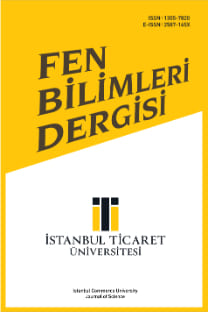İSTANBUL TOPLU TAŞIMA SİSTEM ALGISININ MEVCUT VE SANAL TERCİHLER ÇERÇEVESİNDE LOJİT MODEL İLE İNCELENMESİ
Toplu taşıma sistem algısı, Algı analizi, İkili Lojit ModeL, Ödeme isteği analizi
INVESTIGATION OF THE ISTANBUL PUBLIC TRANSPORTATION SYSTEM PERCEPTION WITH THE LOGIT MODEL WITHIN THE FRAMEWORK OF REVEALED AND STATED PREFERENCES
Public transport user perception, perception analysis, Binary logit model, Willingness to pay analysis,
___
- Demographia, (2020), Demographia World Urban Areas: 16th Annual Edition June 2020., 05.11.2020, http://www.demographia.com/db-worldua.pdf.
- Del Castillo, J.M., Benitez, F.G., (2012), “A Methodology for Modeling and Identifying Users Satisfaction Issues in Public Transport Systems Based on Users Surveys”, Procedia-Social and Behavioral Sciences, 54, 1104-1114.
- Dell’Olio, L., Ibeas, A., Cecin, P., (2010), “Modelling User Perception of Bus Transit Quality”, Transport Policy, 17, 388-397.
- Dell’Olio, L., Ibeas, A., Cecin, P., (2011), “The Quality of Service Desired by Public Transport User”, Transport Policy, 18, 217-227.
- Domencich, T.A., McFadden, D., (1975), Urban Travel Demand: A Behavioral Analysis, North-Holland Publishing Company, Amsterdam.
- Friman, M., (2004), Implementing Quality Improvements in Public Transport, Journal of Public Transportation, 7(4), 49-65.
- Horowitz, J.L., Koppelman, F.S., Lerman, S.R., (1986), “A Self – Instructing Course in Disaggregate Mode Choice Modelling”, Federal Transit Administration, Washington. Lall, S.V., Selad, H., Shalizi, H., (2006), “Rural-Urban Migration in Developing Countries: A Survey of Theoretical Predictions and Empirical Findings”, World Bank Policy Research Working Paper, 3915.
- Lancaster, K.J., (1966), “A New Approach to Consumer Theory”, Journal of Political Economy, 14(2), 132-57.
- Li, Z., Hensher, D.A., (2011), “Crowding and Public Transport: A Review of Willingness to Pay Evidence and Its Relevance in Project Appraisal”, Transport Policy, 18, 880-887.
- Marans, R.W., (2012), “Quality of Urban Life Studies: An Overview and Implications for Environment-Behavior Research”, Procedia-Social and Behavioral Sciences, 35, 9-22.
- Ortuzar, J.D., Willumsen, L.G., (2011) “Modelling Transport: 4th Edition”, John Wiley & Sons, UK.
- Türkiye İstatistik Kurumu (TUIK), (2020), 05.11.2020, https://data.tuik.gov.tr/tr/main-category-sub-categories-sub-components2/.
- United Nations, (2018), World Organization Prospect. 05.11.2020, https://population.un.org/wup/Publications/Files/WUP2018-Report.pdf.
- Wener, R.E., Evans, G.W., (2010), ”Comparing Stress of Car and Train Commuters”, Transportation Research Part F, 14, 111-116.
- Williams, H.C.W.L., (1977). “On The Formation of Travel Demand Models and Economic Evaluation Measures of User Benefit”, Environment and Planning A, 9(3), 285-344.
- Williams, H.C.W.L., (1981). “Travel Demand Forecasting: an Overview of Theoretical Development. In D.J. Banister and P.G. Hall (eds.)”, Transport and Public Policy Planning, Londra.
- ISSN: 1305-7820
- Yayın Aralığı: 2
- Başlangıç: 2002
- Yayıncı: Doç. Dr. Necip Şimşek
İTFAİYE İSTASYONLARINDAKİ TEHLİKELERİN ÇOK KRİTERLİ KARAR VERME YÖNTEMLERİ İLE ÖLÇÜLMESİ
Muhammed Ali GÜLEÇ, Berk AYVAZ
BİTKİSEL TARIM ETKİNLİĞİNİN VERİ ZARFLAMA ANALİZİ İLE ÖLÇÜMÜ: TÜRKİYE’DE İL DÜZEYİNDE BİR ÇALIŞMA
Alper Yavuz BAHADIROĞLU, Yalçın EYİGÜN
Mahmut Esad ERGİN, Hüseyin Onur TEZCAN
UZUNLAMASINA HAREKET KAPSAMINDA İRTİFA KİLİTLEME UÇUŞ KONTROL SİSTEMİ TASARIMI
Ahmet Hulusi ÖZ, Muammer KALYON
TEKSTİL ENDÜSTRİSİNDE PİGMENTLERİN KULLANIMI VE İNSAN SAĞLIĞINA ETKİLERİNİN İNCELENMESİ
VERİLOG İLE TAUSWORTHE DENKLEMİNE DAYANAN YENİ BİR RASTGELE SAYI ÜRETECİ TASARIMI
